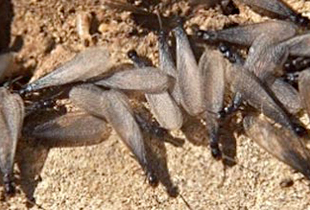

2018-03-16 Dott. Pietro Carta posted:
It has often happened to give space in our blog to articles about termites.
We have described the main methods of struggle, the characteristics that differentiate them from winged ants and the damage they can cause.
Today we will focus on the description of the various species of this feared weed.
The species most present in our region (in Sardinia and Corsica is the subspecies Lucifugus corsicus).
Shiftable and difficult to contrast, if not with highly sophisticated methods, they attach wooden frames, supporting beams, parquet, mezzanines, wooden artefacts and paper material.
Starting from the ground the colonies move in the tunnels dug in friable materials or in the characteristic earthy paths.

Easily distinguishable from other termites thanks to the "yellow collar".
It lives in epigeans dug mainly in the wood of decaying trees but it also attacks healthy plants and dry wooden artefacts.
It does not produce earthy paths.

It is one of the most dangerous termites for the wooden structures and furnishings of dwelling houses and museums.
The tunnels are very large and always clear of any trace of excrement that are barrel-shaped hexagonal, as in Kalotermes flavicollis but, unlike the latter, are with slightly hollowed faces.
 How much it cost?
How much it cost?